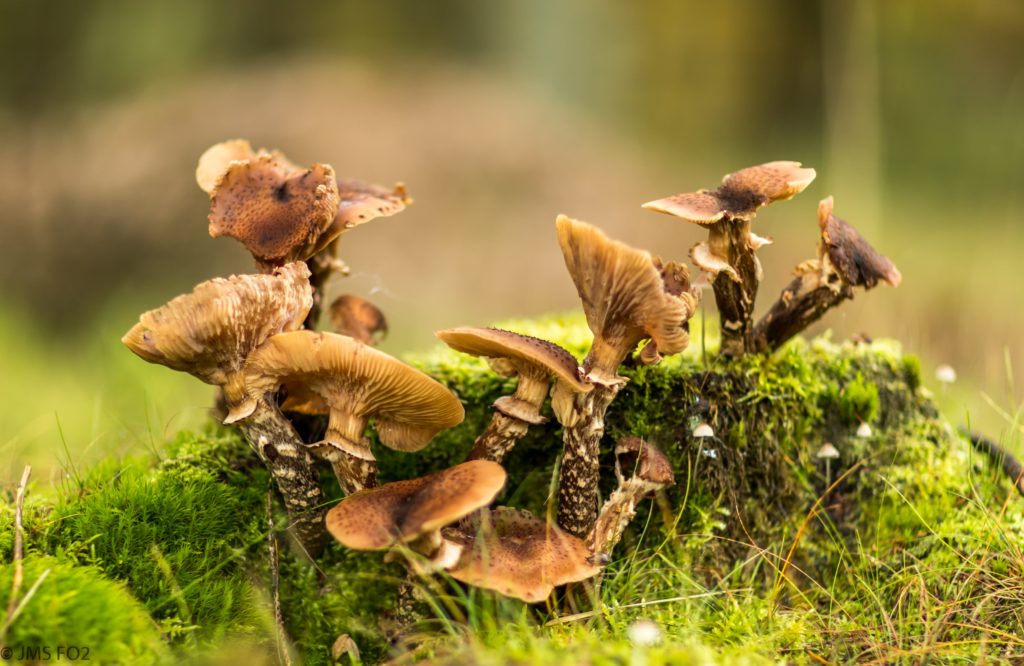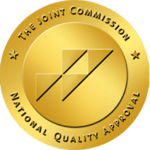Micro-dosing can be considered taking a sub-perceptual dose of a substance. This means that you won’t necessarily feel the effects of the drug, but it may still influence your mood and behavior. Microdosing is common among people who use psychedelics recreationally, but it can also be used as a tool for self-improvement or therapeutic purposes.
Microdosing for therapy began in the 1960s with LSD. Dr. Stanislav Grof was one of the first to microdose LSD for therapeutic purposes. He found that micro-dosing LSD could help treat patients with a variety of mental health conditions, including depression and anxiety.
In recent years, there has been a resurgence of interest in micro-dosing as a potential treatment for mental health conditions. A pilot study published in 2016 found that micro-dosing LSD can reduce anxiety and improve mood in people with anxiety disorders.
How LSD/Mushrooms Impact Mental Health
LSD impacts the brain by binding to serotonin receptors. This can result in changes in:
- Mood
- Perception
- Consciousness
Psychedelic mushrooms also bind to serotonin receptors and can produce similar effects.
Psychedelic mushrooms are known to influence the 5-HT2A receptor, which is responsible for the psychedelic effects of the drug. Microdosing LSD can also lead to changes in mood and perception.
LSD and mushrooms are thought to have antidepressant properties. Microdosing LSD has been shown to improve mood and reduce anxiety. Psychedelic mushrooms have also been shown to be effective in treating depression.
It is important to remember that micro-dosing is not right for everyone. If you are considering micro-dosing, it is important to speak with a medical professional or mental health provider first. They can help you determine if micro-dosing is right for you and provide guidance on how to microdose safely.
What is LSD?
Lysergic acid diethylamide (also known as LSD) is a synthetic drug that alters your perception of reality. It’s classified as a hallucinogen, which means it can change the way you see things, hear things, and feel things.
LSD is one of the most potent, mood-changing chemicals. It is manufactured from lysergic acid, which is found in ergot, a fungus that grows on rye and other grains.
LSD was first synthesized in 1938 by Swiss chemist Albert Hofmann. Hofmann became interested in the compound after accidentally ingesting it.
In the 1950s and 1960s, LSD became popular among young people in the United States as a way to rebel against authority and challenge social norms. LSD is typically sold as a liquid, but it can also be found in tablet or capsule form.
It’s usually taken by mouth, but it can also be:
- Inhaled
- Injected
- Absorbed through the skin
The effects of LSD depend on the amount of the drug that’s used. A small dose (microdose) can produce subtle changes in perception and mood, while a larger dose (macro-dose) can cause profound changes in consciousness and lead to an altered state of awareness (trip).
The Short-Term Effects of LSD
The short-term effects of LSD include:
- Increased heart rate
- Dilated pupils
- Elevated blood pressure
- Sweating
- Loss of appetite
- Dry mouth
- Tremors
- Anxiety
- Panic attacks
The short-term effects of LSD are largely dependent on the individual’s state of mind at the time of ingestion, as well as the dose that is taken.
Generally, a microdose of LSD (between 10-20 micrograms) will produce mild changes in perception and mood, while a standard dose (100-200 micrograms) can produce more profound changes.
The user can experience anything from mild changes in perception (such as colors seeming brighter or patterns appearing more pronounced) to more profound changes in thought and emotion. These effects typically last between 6-12 hours, although they can occasionally persist for 24 hours or more.
LSD is not considered to be addictive, but there is a potential for abuse. Some people who microdose LSD do so in an attempt to self-medicate for mental health conditions such as depression, anxiety, or OCD.
Others microdose LSD for its cognitive-enhancing effects. Microdosing can also lead to an increase in tolerance, which means that higher doses are required to achieve the same effect.
What are Psychedelic Mushrooms?
Psychedelic mushrooms are mushrooms that contain the psychoactive compound psilocybin. Psilocybin is a naturally occurring psychedelic compound found in more than 200 species of mushrooms, commonly known as “magic mushrooms” or “shrooms”.
Psychedelic mushrooms are used for their psychological and physiological effects, which can include:
- Altered states of consciousness
- Visual or auditory hallucinations
- Synesthesia
- Euphoria
- Spiritual experiences
- Increased feelings of well-being and self-awareness
Microdosing refers to the practice of taking small doses of psychedelics in an effort to improve mood, increase creativity, and boost cognitive performance. Microdoses are typically 1/20th to 1/10th of a recreational dose.
The benefits of micro-dosing are highly individualized and dependent on set and setting. Some people report feeling more productive, while others find that microdoses help them to feel more relaxed and less anxious.
Psychedelic mushrooms have been used for centuries in religious and spiritual rituals. In recent years, there has been a renewed interest in the therapeutic potential of these substances.
A number of clinical trials are currently underway to investigate the efficacy of psychedelics in treating a variety of mental health conditions, including:
- Depression
- Anxiety
- Addiction
- PTSD
The Short-Term Effects of Psychedelic mushrooms
The short-term effects of psychedelic mushrooms include:
- Increased heart rate
- Dilated pupils
- Nausea
- Muscle weakness
- Dizziness
- Panic
- Paranoia
The long-term effects of psychedelic mushrooms are not well understood, but there is some evidence to suggest that they can be psychologically damaging. Psychedelic mushrooms have also been linked to an increased risk of developing psychosis. Microdosing psychedelic mushrooms are not recommended.
Is Micro-dosing safe?
There is no definitive answer to this question since everyone reacts differently to drugs, even in micro doses. Some people may experience no negative side effects from micro-dosing, while others may find that the risks outweigh the benefits. It’s important to do your research and be aware of the potential risks before micro-dosing any substance.
What Is an Average Dosage of LSD and Psychedelic Mushrooms?
The average dosage per microdose is between 10 and 20 micrograms. This is a very small amount, and it can be hard to measure accurately.
How Long Do the Effects of a Microdose Last?
The effects of a microdose typically last for 4-6 hours. However, some people report feeling the effects for up to 12 hours.
The Benefits of Micro-dosing
The benefits of micro-dosing may include enhanced creativity, focus, and physical performance. Microdosing can also help to treat conditions like depression and anxiety.
What Are the Risks of Micro-dosing?
There are some potential risks associated with micro-dosing, such as increased anxiety, paranoia, and hallucinations. It’s important to weigh the risks and benefits of micro-dosing before trying it. Additionally, it’s important to be aware that the effects of micro-dosing can vary depending on the person and the substance being used.
What Is the Best Way to Microdose?
There is no one “right” way to microdose. The best way to microdose will vary depending on your goals and objectives.
Some people microdose by taking a small amount of LSD or psilocybin mushrooms every few days, while others may microdose with cannabis or MDMA on a regular basis. It’s important to experiment and find what works best for you.
Who Shouldn't Try Micro-dosing for Addiction?
People who shouldn’t try micro-dosing LSD or mushrooms for addiction include:
- Those with a history of mental illness
- Those who are pregnant or breastfeeding
- Those who are taking medications that could interact with the substances.
Microdosing should also be avoided if you have a job that requires you to be drug-free.
How Do Clinicians Use Microdosing for Addiction?
Medical professionals have used micro-dosing for addiction in a variety of ways. One common approach is to microdose LSD or another psychedelic drug to help patients through the withdrawal process. This can be an effective way to ease the symptoms of withdrawal and reduce the risk of relapse.
Microdosing can also be used as a tool for harm reduction in people who are struggling with addiction. This approach can help people reduce their use of drugs without experiencing the negative side effects of abstinence.
The Stigmas of LSD/mushrooms
The stigmas of hallucinogens of LSD and mushrooms are largely due to the way these drugs were portrayed in the media during the late 1960s and early 1970s. These drugs were associated with the counterculture movement of the time, which was often seen as a threat to society.
This portrayal of LSD and mushrooms led to these drugs being banned in many countries. However, recent research has shown that these substances can have a number of potential benefits when used responsibly.
Microdosing can be an effective way to treat addiction and reduce harm. However, it is important to remember that micro-dosing is not a cure-all solution. If you are struggling with addiction, it is important to seek professional help.
What Are Treatment Options for Hallucinogen Treatment?
There are many different treatment options for addiction to LSD, mushrooms, and other hallucinogens. Treatment options can include:
- Therapy
- Support groups
- 12-step programs
- Detoxification
- Medication
It is important to find a treatment option that is right for you. If you are struggling with addiction to LSD, mushrooms, or other hallucinogens, reach out to a medical professional or mental health provider today. They can help you find the right treatment option for your needs.
For many people struggling with addiction, microdosing LSD can be a powerful tool for self-transformation. Westwind Recovery® offers detox, counseling, and 12-step support groups.
With so many temptations and distractions, it’s easy to relapse into old patterns of drug or alcohol use. If you’re looking for an innovative and effective treatment for substance abuse in Los Angeles, look no further than Westwind Recovery®.

Dr. Deena is the Chief Clinical Officer of Westwind Recovery®, an award-winning outpatient treatment center in Los Angeles where she oversees the clinical and administrative program and treatment methods. Dr. Deena is a doctor of psychology and licensed clinical social worker since 1993. LCSW #20628. Originally from the East Coast, Dr. Deena has worked running treatment centers, worked as a therapist in psychiatric hospitals as well as school settings and currently has a thriving private practice in the LA area. Dr. Deena has appeared regularly on the Dr. Phil Show as an expert since 2003. She has also been featured on many other TV shows, podcasts and has contributed to written publications as well as podcasts.




